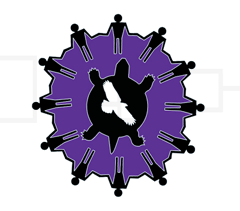Abstract
Bullying is widespread in the United States. Bullying negatively impacts all youth involved, including those who are bullied, those who bully others, and those who witness bullying, known as bystanders. The Sweetgrass Method (SGM) is a culturally responsive framework that empowers Native and non-Native practitioners working with American Indian/Alaska Native clients. The method focuses on the initial dialogue of building a healthy relationship through self-reflection, communication, and continuity. The SGM looks at weaving Western and traditional approaches into a tailored approach that is culturally responsive to the individuals they serve. The SGM provides a framework by weaving the three strands: the first strand in the braid is Introspection, which is a commitment to self-reflection (life-long practice to self-evaluation and self-critique on bullying prevention supports). The second strand is Communication, which is a commitment to building relationships/partnerships with people and groups to address Bullying concerns. The third strand is Continuity: Ongoing strategies toward power inequality and student responsibility for bully prevention (Baez & Isaac, 2013; Baez et al., 2022). The SGM to Bullying Prevention is a community-based participatory practice approach incorporating practice-based evidence (PBE), which looks at what works for this community setting. The PBE is a promising practice among American Indian/Alaska Native school communities. Practice-Based Evidence: A range of behavior approaches and supports derived from and supportive of the positive culture of the local society and traditions (Bartgis & Bigfoot, 2010). Applying the SGM in collecting practice-based evidence is to objectively understand the relationship between our actions as a practitioner and the response of those we serve.
Recommended Citation
Baez, M. Standing Eagle Ph.D. and Baez, C. Allison Ph.D.
(2025)
"A Sweetgrass Method of Bullying Prevention for American Indian/Alaska Native Part 2,"
Journal of Indigenous Research: Vol. 13:
Iss.
2025, Article 4.
Available at:
https://digitalcommons.usu.edu/kicjir/vol13/iss2025/4

